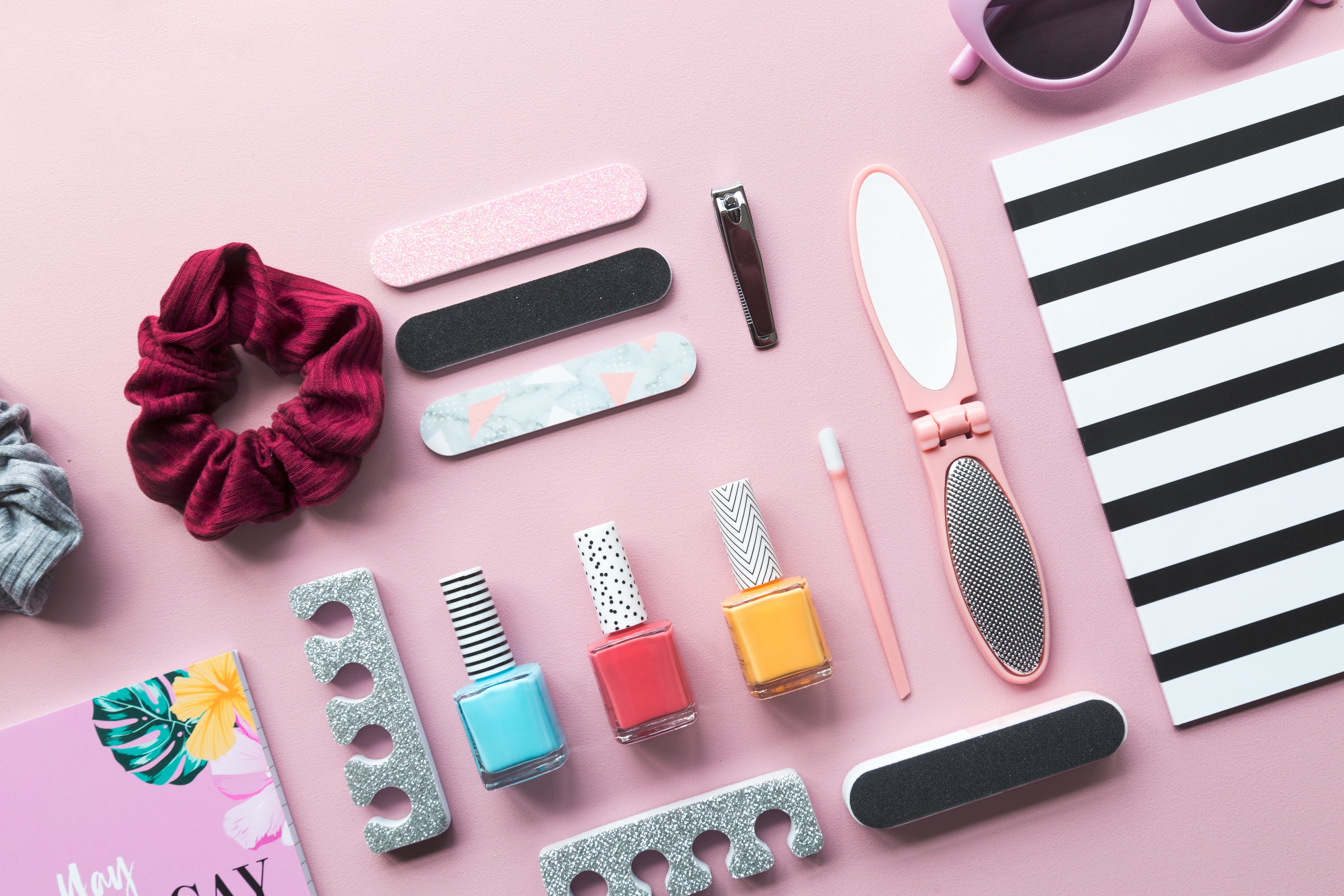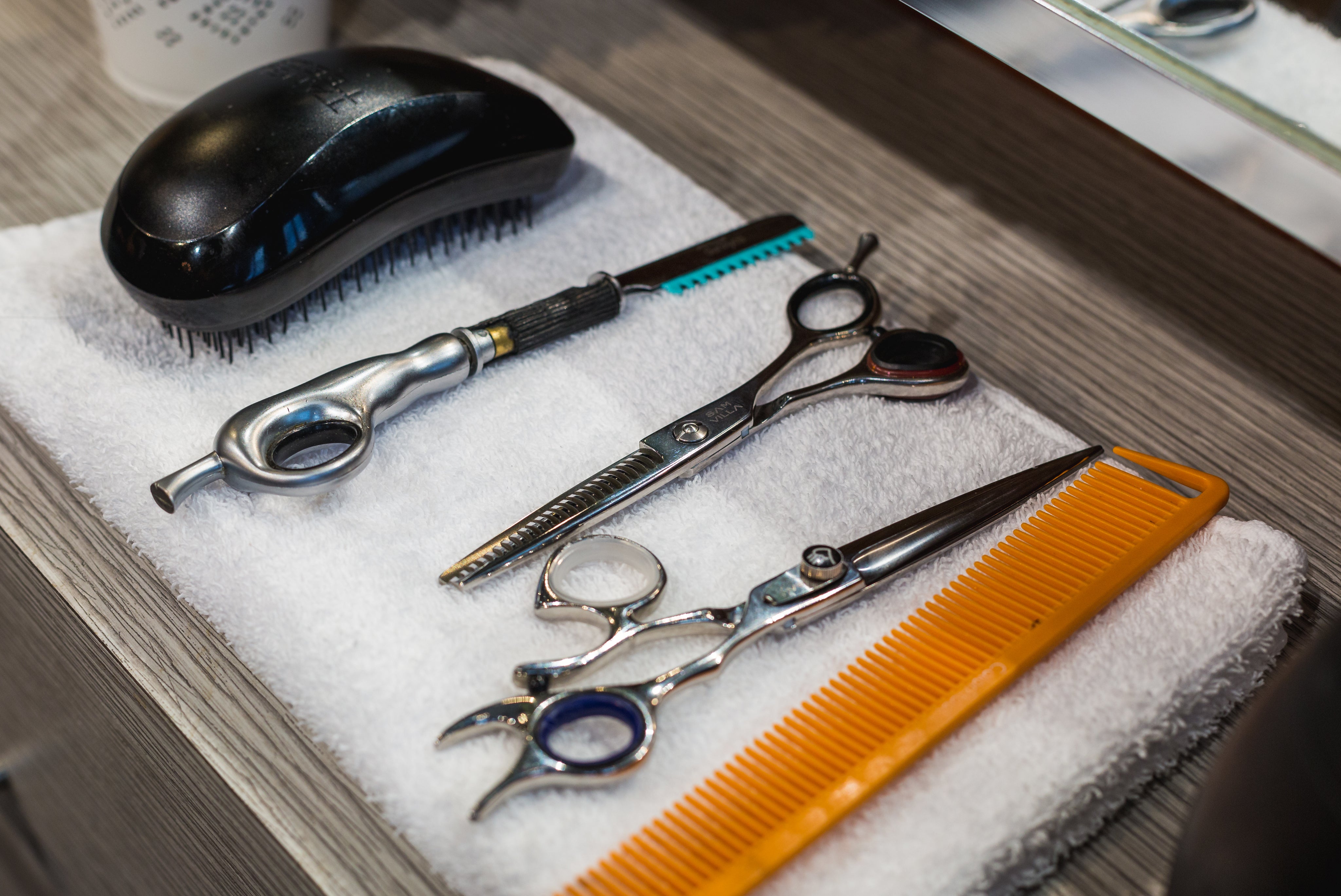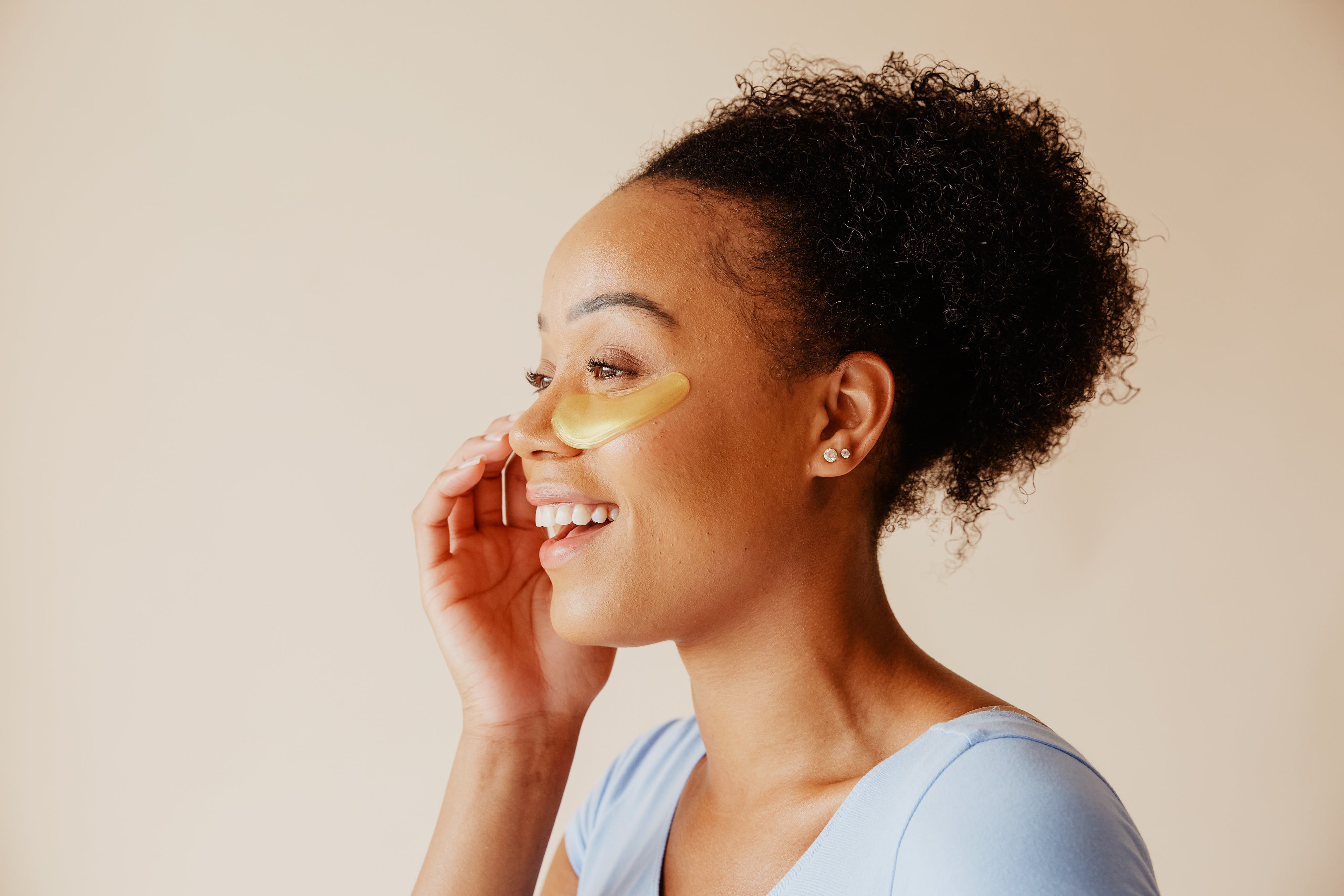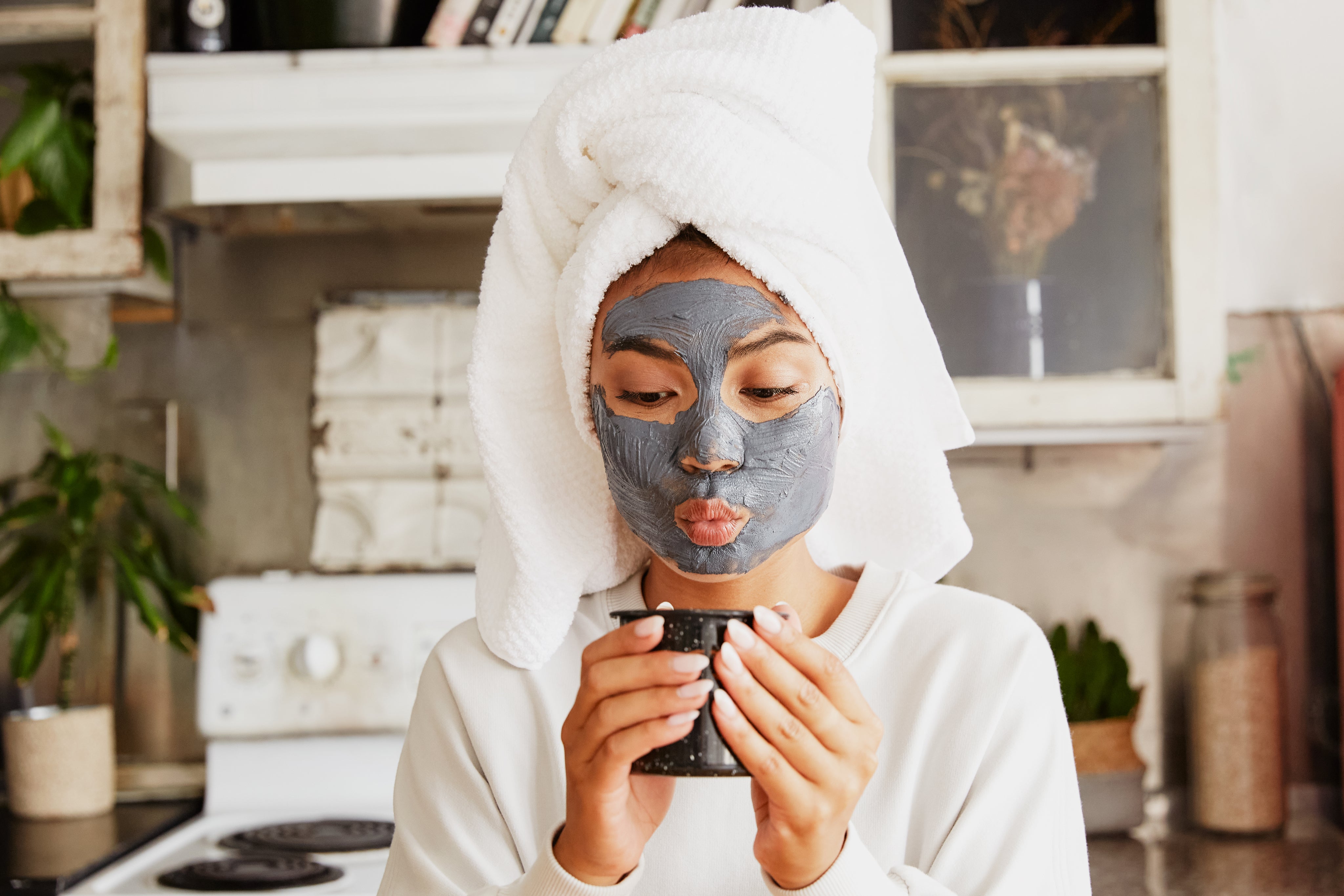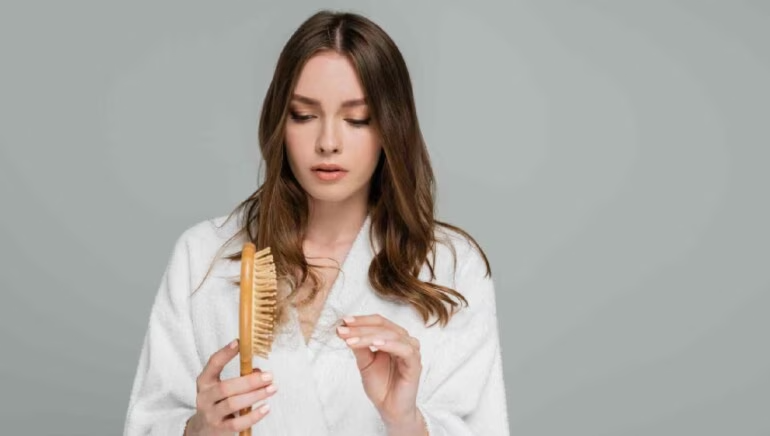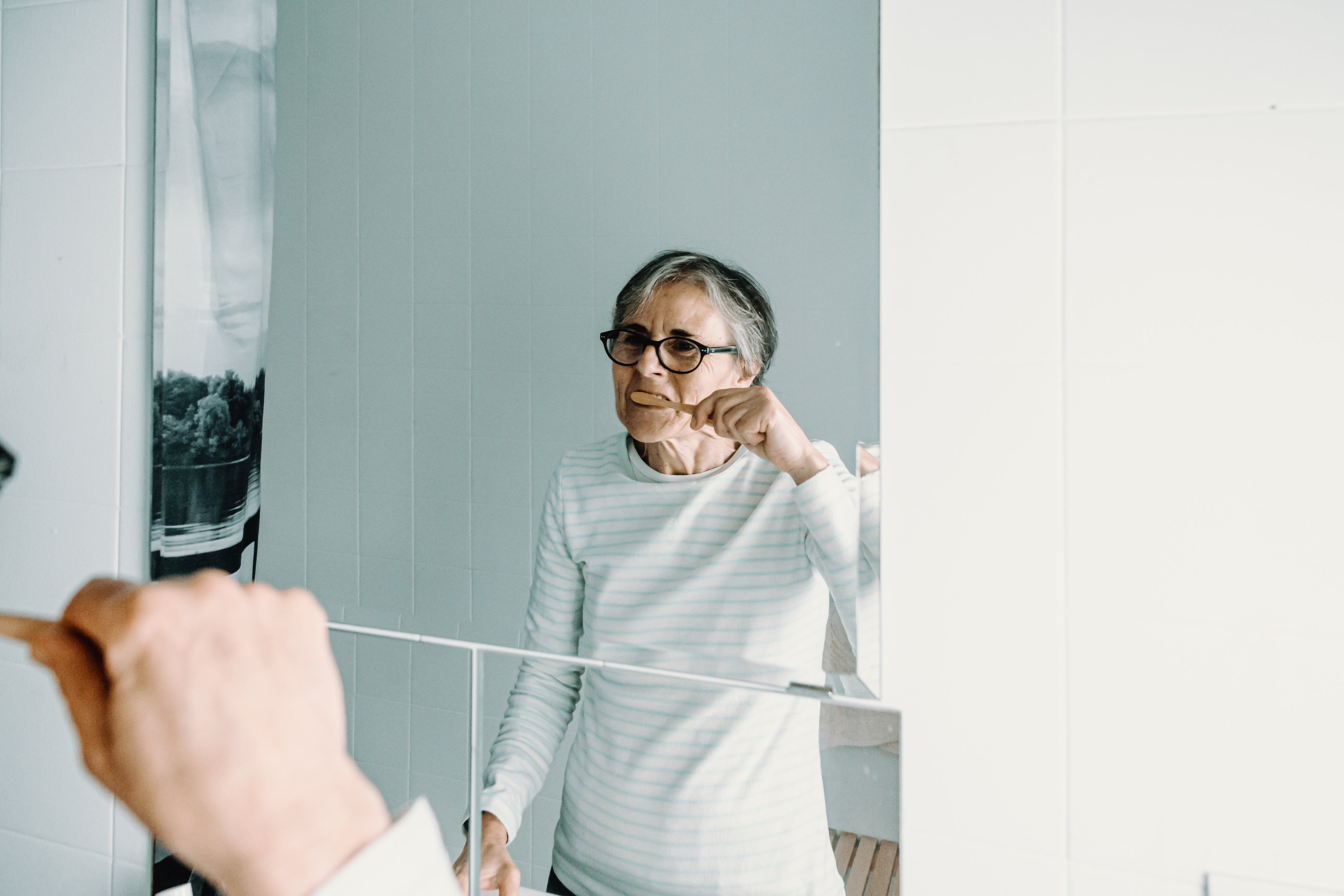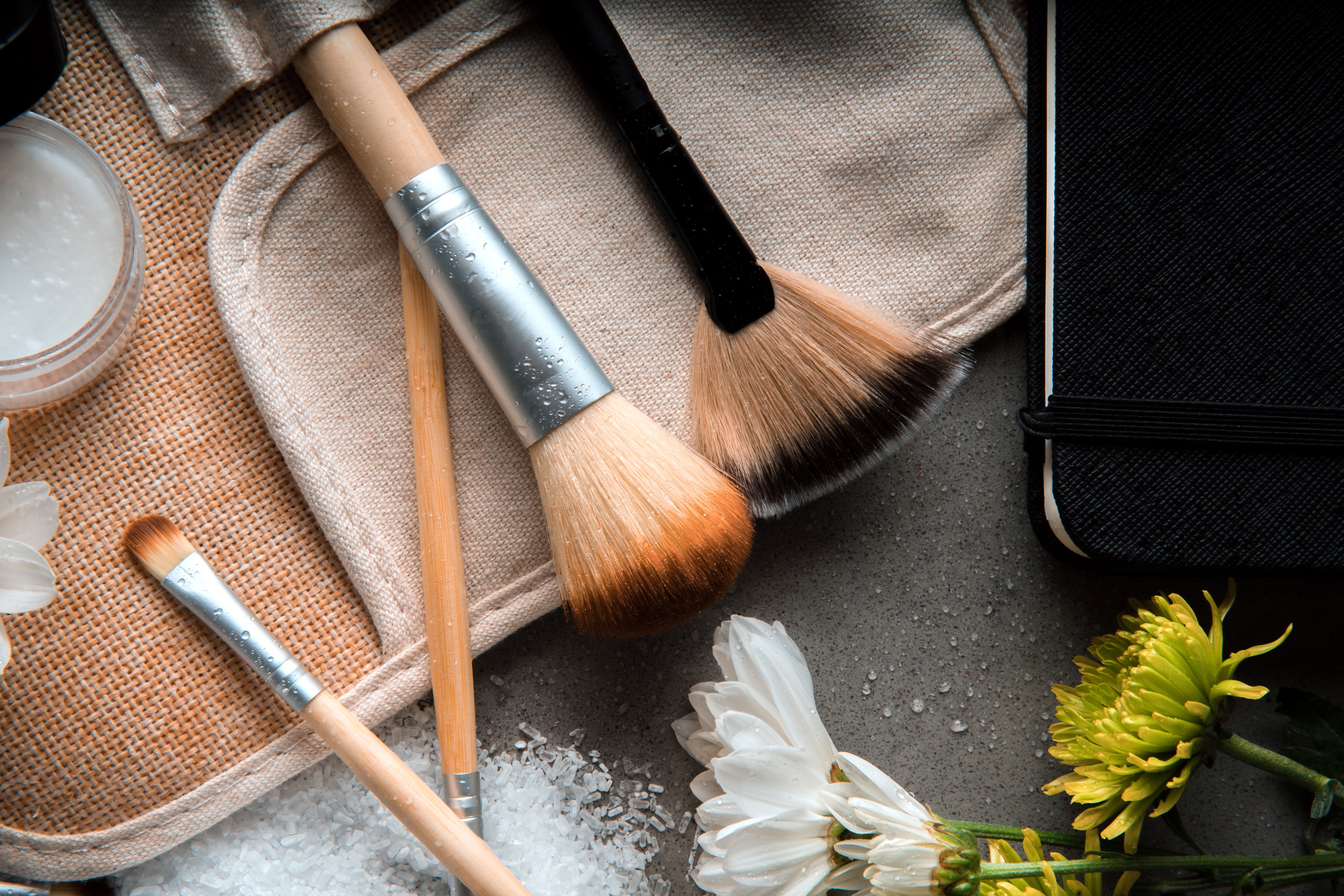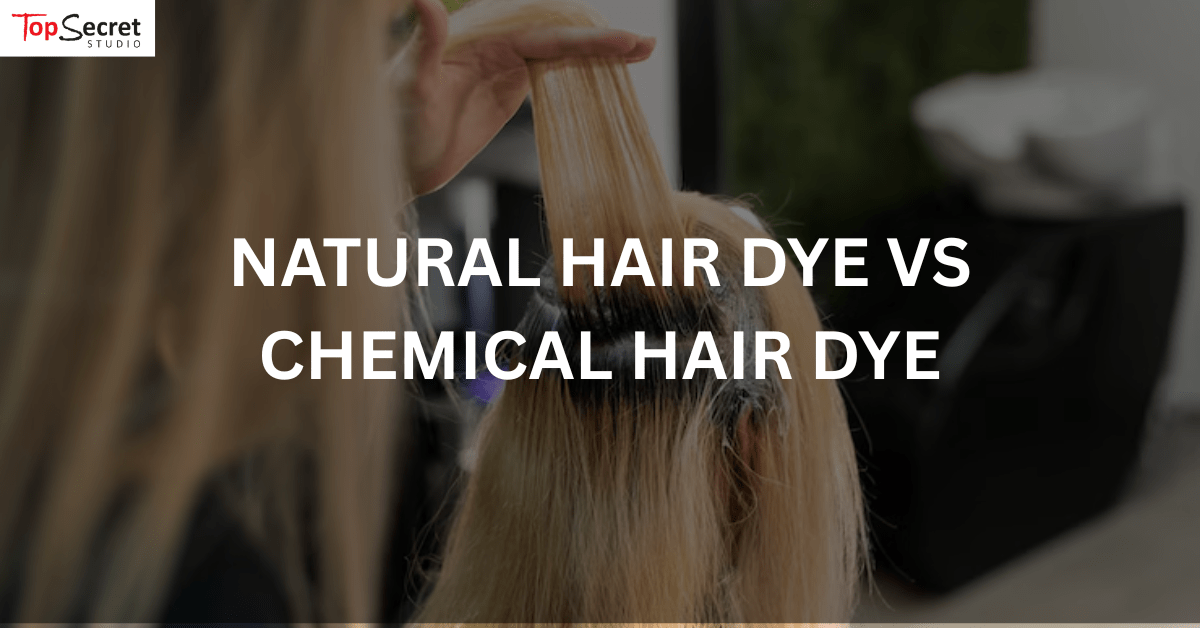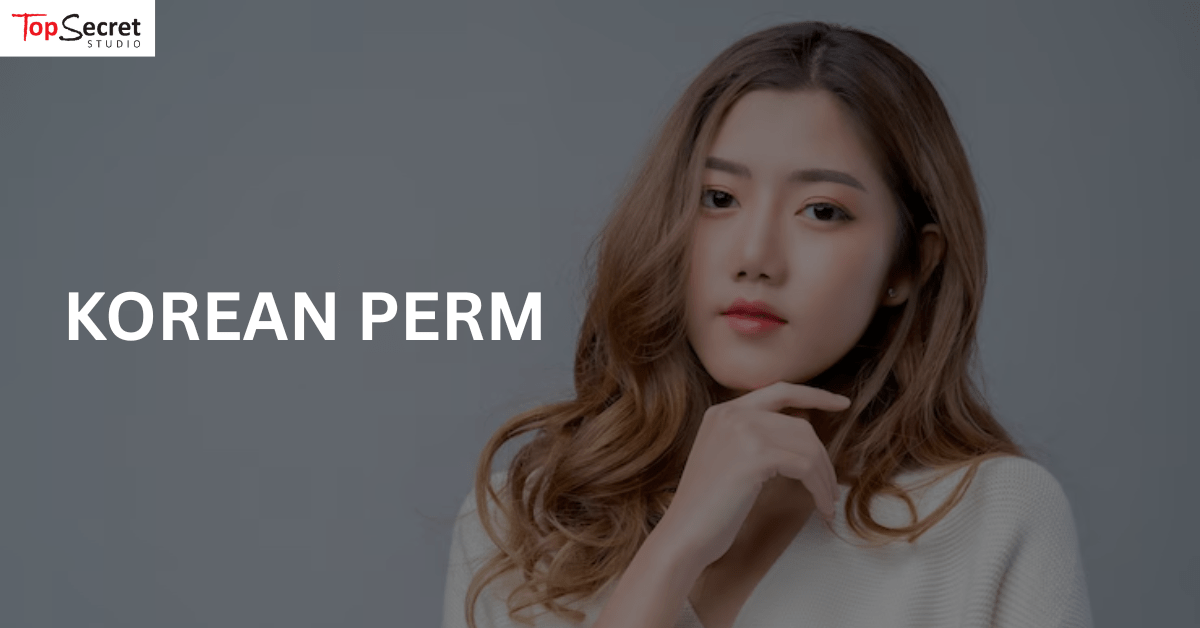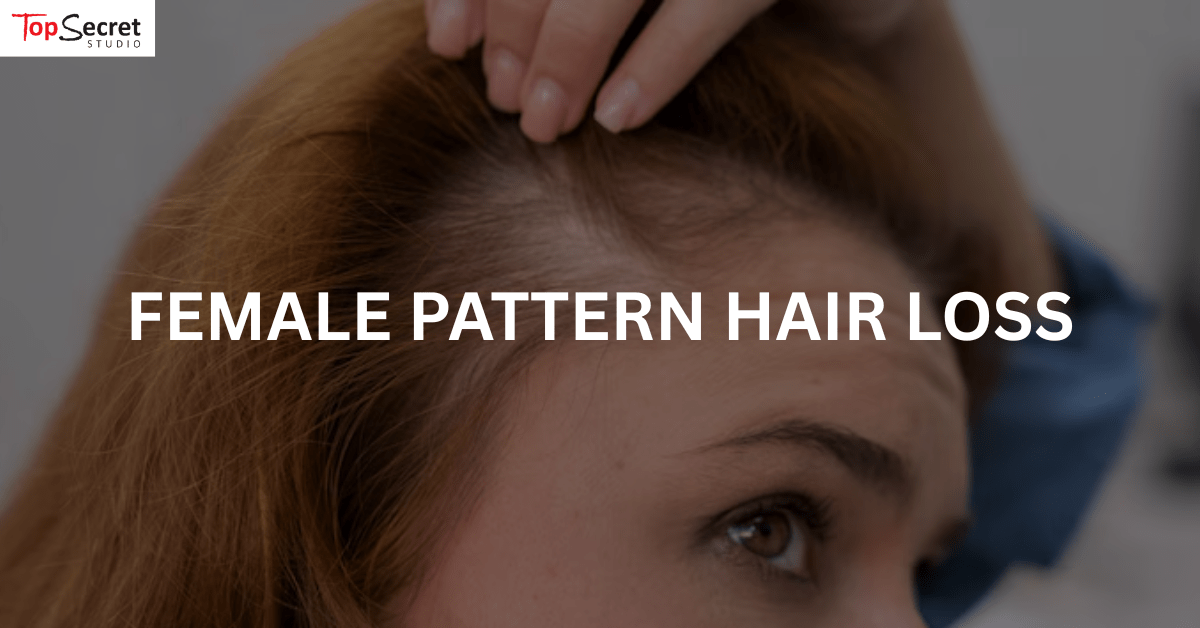
Female Pattern Hair Loss: What Every Woman Should Know
Hair loss in women isn’t just a cosmetic concern, it can be deeply personal and emotionally taxing. Thinning hair can quietly chip away at self-esteem and often goes unspoken for far too long.
One of the most common causes is female pattern hair loss, also known as androgenetic alopecia. It affects millions worldwide and tends to become more noticeable from the 30s onwards.
But fret not! Top Secret is here to guide you with clear, trusted, and science-backed information on what female pattern hair loss is, what causes it, how to spot it early, and the available treatments.
What Is Female Pattern Hair Loss?
Female pattern hair loss is a gradual thinning of hair, usually around the parting line and crown. Unlike men, women typically don’t go completely bald from this condition, but the overall hair volume becomes noticeably less dense.
Female pattern hair loss is not just about losing hair. It’s about changes in confidence, identity, and daily habits.
Signs to Watch For
Early detection can make a significant difference. Some common signs include:
- Widening of the parting
- Overall reduction in hair volume, especially on the crown
- Hair that feels finer or more fragile
- Increased hair fall while brushing or washing
It tends to be slow and subtle, which makes it harder to notice until there’s a visible difference.
What Causes It?
Several factors contribute to this form of hair loss, and it's often a mix of internal and external triggers. Here's a breakdown:
| Cause | Details |
|---|---|
| Genetics | Family history of thinning hair can increase risk |
| Hormonal changes | Menopause, pregnancy, post-partum and polycystic ovary syndrome (PCOS) can affect hair health |
| Age | Hair naturally thins with age due to slowed growth cycles |
| High levels of DHT | A by-product of testosterone that shrinks hair follicles |
| Health conditions | Thyroid issues, iron deficiency, anaemia |
| Stress | Both physical and emotional stress can trigger shedding |
Treatment Options: What Really Works?
When it comes to hair care, it’s important to know there’s no one-size-fits-all solution. Everyone’s hair is different but rest assured, there are treatments that can slow the loss, improve thickness, and in some cases, stimulate regrowth.
1. Minoxidil (Rogaine)
Minoxidil is one of the most widely recommended treatments for female hair thinning. It works by increasing blood circulation to the hair follicles, which helps to extend the active growth phase and support thicker strands. It’s available in both 2% and 5% topical solutions, with the 2% often being better tolerated for sensitive skin.
Pros:
-
Widely available in pharmacies
You don’t need a prescription, making it easy to access and begin treatment at home.
-
Backed by decades of clinical use
Numerous studies over the years have shown that it can slow hair loss and, in some cases, promote regrowth in women.
-
Can slow down hair loss and improve hair density
Many users notice reduced shedding and gradual thickening with regular use.
Cons:
-
Must be used continuously
Stopping treatment usually causes any progress to be lost, so commitment is important.
-
Results can take 3–6 months
It works slowly, and patience is needed to judge its effectiveness fairly.
-
Possible side effects include scalp irritation and initial shedding
Some women experience redness, flaking, or increased hair fall in the first few weeks as follicles adjust.
Many women see improvement with minoxidil, especially when they start early. Consistency is the key.
If your scalp is prone to sensitivity, begin with the 2% solution and apply only when your scalp is completely dry to reduce irritation.
2. Prescription Medications
For women with hormone-related hair thinning, certain oral medications may be recommended under a doctor’s supervision. These treatments are typically used when topical options haven’t been enough, or when there’s an underlying hormonal imbalance contributing to the hair loss.
-
Spironolactone
This medication blocks the effects of androgens (male hormones) in the body, which can help reduce hair thinning in women with elevated hormone levels. It's particularly useful for those with PCOS or other hormonal conditions. -
Finasteride
Though primarily used for male pattern hair loss, some doctors prescribe it off-label for women after menopause. It works by blocking the conversion of testosterone to DHT, the hormone that can shrink hair follicles. -
Oral Minoxidil
Originally used to treat high blood pressure, this low-dose version is now gaining attention for its positive effects on hair growth. It’s taken as a tablet and can be effective for women who don't tolerate the topical version.
These treatments can have side effects and are not suitable during pregnancy, so they must be taken under professional guidance.
3. Hair Growth Support: Supplements & Nutrition
While supplements alone won’t reverse genetic hair loss, they can help if poor nutrition or deficiency is making the problem worse. Hair follicles are just like plants, they need the right nutrients to grow healthy strands, and even mild deficiencies can affect the quality and thickness of hair.
Look for supplements containing:
- Iron (especially if you're anaemic)
- Biotin and Zinc
- Vitamin D and B-complex vitamins
Also, aim for a balanced diet with foods rich in:
- Lean proteins
- Whole grains
- Healthy fats
- Leafy greens
Getting your nutrition right can help create a healthier environment for your hair to grow, and may also support the success of medical treatments like minoxidil.
4. Low-Level Laser Therapy (LLLT)
Low-Level Laser Therapy uses light energy to stimulate blood flow and cellular activity in the scalp, which may help revive weakened hair follicles. Devices such as laser combs, helmets, and caps are available for home use, making it a convenient non-invasive option.
Although it’s generally pain-free and easy to incorporate into your routine, results can vary and consistent use over several months is usually needed before changes become noticeable.
5. Platelet-Rich Plasma (PRP) Therapy
PRP therapy involves drawing a small amount of your blood, separating out the platelets, and then injecting them into areas of thinning on the scalp. These platelets are rich in growth factors that may support tissue repair and encourage hair follicle activity.
While the process can be uncomfortable and the cost is relatively high, early studies and patient experiences suggest it may be beneficial—particularly when combined with other treatments like minoxidil.
6. Hair Transplant for Women
Hair transplants involve relocating healthy follicles, usually from the back or sides of the scalp, to areas where thinning is more obvious. Though often thought of as a solution for male baldness, this procedure can also be effective for women with permanent hair loss in specific areas, especially when the pattern is stable and donor hair is suitable.
The recovery process takes time and results appear gradually, but it can offer long-term improvement if all other treatment methods fail to bear results.
Managing Hair Loss: What You Can Do Now
While medical treatments can play a helpful role, everyday hair washing or care habits also have a noticeable impact on the health of your hair. Making small adjustments to how you care for your scalp and strands can help reduce further thinning and protect what you still have
-
Use gentle, sulphate-free shampoos
Harsh shampoos can strip away natural oils, leaving the scalp dry and irritated. Sulphate-free formulas are milder and help maintain the scalp’s protective barrier. -
Avoid tight hairstyles like ponytails and buns
Constant pulling from tight hairstyles puts strain on the roots and can cause a type of hair loss called traction alopecia. Choose for loose styles that reduce tension and allow the scalp to breathe. -
Reduce heat styling and chemical treatments
Frequent use of straighteners, curling irons, or harsh dyes can weaken the hair shaft, leading to breakage and dullness. -
Use a wide-tooth comb to avoid breakage
Tugging through knots with a fine-tooth comb can cause unnecessary snapping and shedding. A wide-tooth comb glides through the hair more gently, especially when it’s wet and at its most fragile. -
Massage the scalp with essential oils
Gentle massage boosts circulation, which may help stimulate hair follicles and support growth. Certain oils, like rosemary and peppermint, have shown encouraging effects in small studies and add a relaxing touch to your routine.
When Should You See a Specialist?
It’s easy to dismiss hair shedding as something temporary, but early attention can make a real difference in managing hair loss and understanding what’s going on beneath the surface.
-
Persistent shedding for more than 3 months
If your hair continues to fall out for several months, it could mean something more than just a normal shed. Ongoing loss may signal a hormonal shift, nutritional deficiency, or another underlying issue that isn’t likely to resolve on its own. -
Sudden or patchy hair loss
Losing hair in round patches or all at once often points to a different type of condition, such as alopecia areata or a scalp infection. These require proper diagnosis and specific treatments, so it’s best not to wait and see if it settles on its own. -
Scalp redness, flaking, or itching
A healthy scalp is key to healthy hair, so any ongoing discomfort should be taken seriously. These symptoms could suggest dermatitis, psoriasis, or even a fungal issue, all of which can contribute to hair thinning if left unaddressed. -
Bald spots or visible scalp through hair
If you’re starting to see more scalp showing particularly along your parting or crown, it may mean that follicle activity is slowing down.
The earlier you identify what’s causing your hair loss, the more choices you’ll have to manage it effectively.
Take Proactive Action to Protect Your Hair
Female pattern hair loss can feel frustrating, sometimes even isolating but it’s more common than many realise, and you're not alone. Understanding what’s happening, what to look out for, and how to respond can make a real difference in both managing the condition and feeling more in control.
At Top Secret, we believe hair care should go beyond surface-level solutions. That’s why we’ve developed a dedicated range of products designed to support thinning hair.
Our conditioners and scalp treatments for thinning hair are formulated to be gentle, nourishing, and compatible with both natural and medicated routines.
We encourage you to be patient with your progress, kind to your scalp, and consistent with your care. If something feels off or your hair loss has been ongoing, don’t hesitate to reach out to a specialist.
Remember, it’s not about vanity, it’s about your well-being.
Frequently Asked Questions About Female Pattern Hair Loss
Can Female Pattern Hair Loss Be Reversed?
While it cannot usually be fully reversed, early treatment can slow progression and improve density in many cases. Regrowth depends on how long the follicles have been inactive.
Is It Normal to Lose Hair After Giving Birth?
Yes. Postpartum shedding is common due to hormone shifts and typically resolves within 6–12 months. If it persists beyond that, it may be worth investigating further.
Does Wearing Hats or Hijabs Cause Hair Loss?
No. Wearing hats or head coverings does not cause hair loss directly. However, if they are worn tightly and cause friction, they may contribute to breakage along the hairline.
How Do I Tell the Difference Between Hair Shedding and Hair Loss?
Shedding involves losing strands from all over the scalp, often temporarily. Hair loss usually appears as thinning in specific areas like the crown or parting.
Will Changing My Shampoo Stop Hair Loss?
A mild, scalp-friendly shampoo may reduce breakage or irritation but won’t treat the underlying cause of pattern hair loss. It can, however, support a healthier scalp environment.
How Long Should I Try a Treatment Before Expecting Results?
Most treatments, including minoxidil, take at least 3 to 6 months to show visible improvement. Consistency is really important, and results often start with slowing of loss before regrowth appears.

